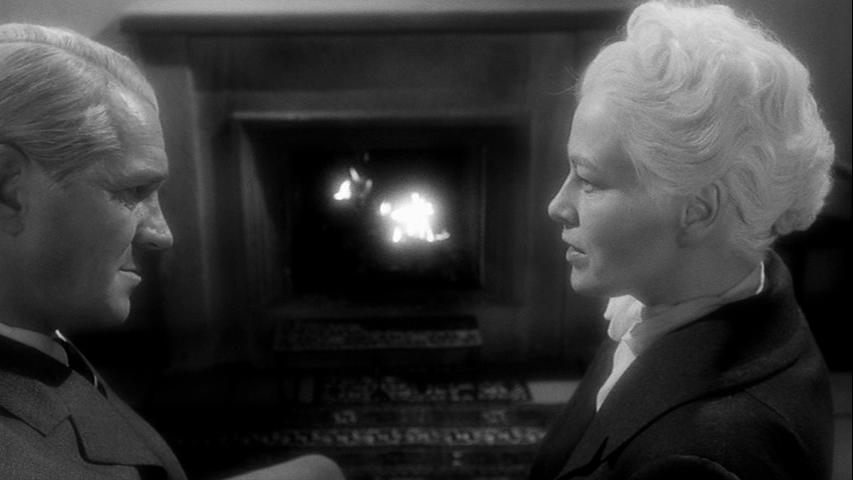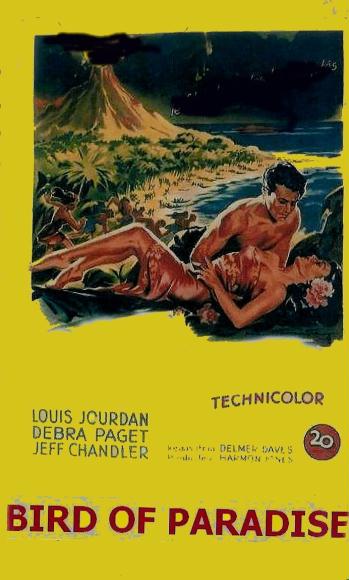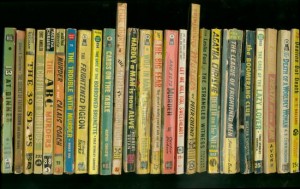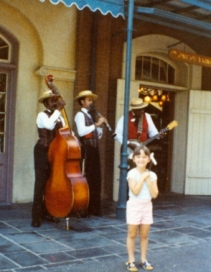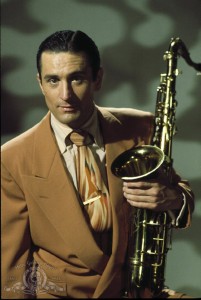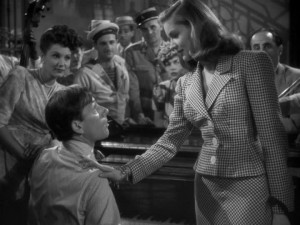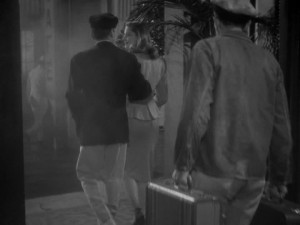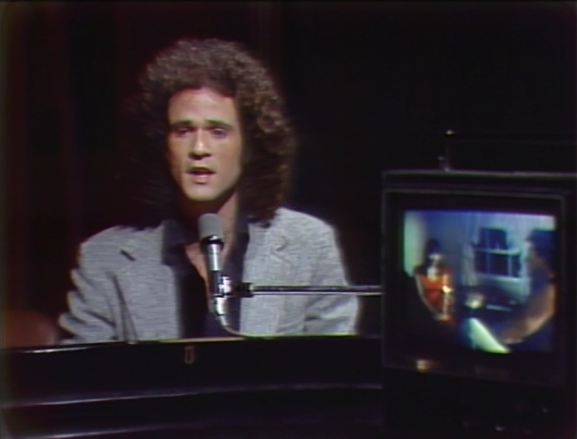The second part of my reprinting of Moving Places: A Life at the Movies (1980); this part appeared originally in Film Comment, and for this appearance I’ve added several illustrations.
Note: The book can be purchased on Amazon here, and accessed online in its entirety here. — J.R.
Prelude—
What I Did on My Summer Vacation (September 1977)
Imagination believes before knowing constructs. Believes longer than remembers, longer than knowing even conjures. Knows believes conjures a highway in Mississippi, August 10, on the way to Faulkner’s home in Oxford, tracing a literary pilgrimage from Florence, my hometown in Alabama, part of whose route might approximate the pregnant journey of Lena Grove on the opening pages of Light in August.
What has any of this to do with cinema? First, the car’s languid progress up and down a straight road flanked by forest: a trick of suspended time, pure movie and pure Faulkner. Then the hot moist afternoon light filtering through the branches into a milky pool of delicate focus, like the last scene in Carl Dreyer’s Gertrud, making it easy to imagine in a tactile, even in a carnal way why Dreyer wanted to adapt Light in August, thinking Yes of course only Dreyer could have done it right, handled both sides of the dialectic, all the hot wood and cold flesh and embracing palpitant air, impregnable and inviolate. Only Dreyer could fashion a Gertrud not classifiable as saint or monster, fool or genius, victor or victim but all these things at once or in tandem, with equal intensity.
Could anyone else film the novel? I recall my lunch with Orson Welles in Paris five summers ago when he talked mainly about literary adaptations: he spoke with horror that someone as “adaptable” as Joseph Conrad had been mangled so badly by filmmakers, and he agreed when I suggested Faulkner as a parallel case, noting that The Long, Hot Summer was probably closer to Tennessee Williams. As long as we’re still in some form of Utopia — Skyway to Fantasyland (One Way), as a “D” ride in Disneyland has it — why not imagine Welles filming it with studio sets, Gregg Toland or Stanley Cortez as cinematographer, and himself in the role of Reverend Hightower?
J. and I finally come upon Faulkner’s Rowan Oak — now owned by Ole Miss and open to visitors — in late afternoon, after parking the car and walking down a paradisical treelined path, placid as the pond where Gertrud’s heart is broken. But the house has just closed for the day. We decide to stay overnight in town and come out for a look in the morning, winding up in a Holiday Inn not far from a courthouse square as Faulknerian as anyone might wish, complete with Confederate monument and benches. Last night we could have gone to a local revival of To Have and Have Not in hommage to Faulkner’s script in a shed across from a converted icehouse two blocks away, apparently student-run, which is also promising Intruder in the Dust later in the summer (“Everyone in Oxford’s in it!”); but tonight they’re screening Rocky. Black Sunday is at a shopping mall on the outskirts of town, but the outskirts of Oxford could be anywhere in America, so we eventually meander over to the Ritz, an old-fashioned theater a block from the courthouse, to see the last show of The Island of Dr. Moreau.
(Four days ago I’d visited the site of another Ritz Theatre, built in Sheffield, Alabama, in 1928, operated by my grandfather until 1951, and miraculously still standing, all but unrecognizably, as a warehouse. And yesterday, in the Louis Rosenbaum Audio-Visual Room at the Florence Public Library, I’d started research on this book by looking up movie ads in the Florence Times in the late forties, trying to resolve the sticky questions of what I’d seen between the ages of four and six and what sort of things they might possibly have done to me.)
To all appearances, Dr. Moreau is a dull, pointless remake of Island of Lost Souls, instantly forgettable. I suspect it’s on the same level as Delmer Daves’s Bird of Paradise, which I haven’t seen for over a quarter of a century: Leonard Maltin gives it two stars (a “grandly filmed but vapid tale”) in TV Movies, and I have no reason to doubt him. Yet I know that Debra Paget’s sacrificial leap into a South Sea volcano caused me hours of distress and gloomy reflections and helped to furnish a dream that triggered a religious crisis a full two or three years after that, when I was all of eleven.
Who’s to say, then, that Dr. Moreau couldn’t do something comparable to someone of the right age and temperament today? Recalling certain songs of Elvis (whose birthplace, Tupelo, we drove through today, and who, like Daves in La Jolla,[*] is still alive at this juncture of August) — songs that were played, Pavlovian-fashion, during key emotional moments of adolescence — and reflecting on the unconscious programming that helps to mold every set of tastes, we can see how the whole business of everyday film reviewing has to ignore the potential resonance in any mass-produced object.
* The San Diego suburb where Delmer Daves lived in retirement before he died, like Elvis, later that month. I lived there too, for six months, before moving to nearby Del Mar.
Dirty old nostalgia: temporal homesickness lavished on objects both real and fancied rather than on people, places, and feelings, all of which seem to have shorter life expectancies. Recent back issues of TV Guide for sale at Bennett’s, a collectors’ haunt in Hollywood; a three-hour program of trailers shown to a joyous packed house at the L.A. County Museum last June. Mid-August, watching John Milius coolly film fragments of an elaborate Fordian fight (cottage interior) and improvise a comic reaction shot (cottage exterior) for Big Wednesday, on an MGM soundstage where Esther Williams apparently once swam. And going to see insidiously warm rétro flicks like Ettore Scola’s We All Loved Each Other So Much (the title tells it all: not only What It Was Like to Be Italian in the Forties, but What It Was Like to Be American and Watch European Humanist Films in the Sixties) or, much closer to home or the lack of it, Between The Lines, What We’d Like to Think the Underground Press Was Like Before Felker, Murdoch and Co. Took It Away from Us.
The reactionary lure of nostalgia — downtown Oxford versus the outskirts, Rowan Oak versus Holiday Inn, old banalities versus new ones — leads one nowhere, yet the facelessness that America tends to replace it with provides even less of an exit. Two days after I leave Oxford, in Hollywood, well after I’ve gone through Faulkner’s house, comparing it with the houses in The Long, Hot Summer and Jerry Wald’s ludicrous The Sound and the Fury, and lingered over his library and workroom as if they and not the works contained any secrets, I come across an account of Faulkner’s film work in the Summer Film Quarterly, which returns me to the realm of scholarship and demonstrable information. And the day after that, I take my third trip to Disneyland, where Skyway to Tomorrowland (One Way) is another “D” ride.
“Just a straight line, no dialectics” — Luc Moullet’s gloss on Cecil B. De Mille — is the simplest description of Disney and Disneyland that I can think of; by contrast, Faulkner and Faulkner World is a marvel of dialectical crookedness. But dig a few inches down and you can find all the contradictions you want in Disneyland, each about to be pasteurized into a clean affirmation of consistency by an efficient staff, all of whose first names are under seven letters long and printed on their uniforms.
In New Orleans Square, you can’t find a Wild Palms or a Pylon ride, but the Royal Street Bachelors, a black trio visibly dressed for Dixieland, mount a cafe bandstand and play a delicately balanced version of fifties chamber jazz; nobody seems to mind the anomaly, just as many spectators have been taking it on faith that Robert De Niro’s Jimmy Doyle in New York, New York is a gifted avant-gardist playing bebop (three errors in four words). J. notes that all the period London streets in the Peter Pan Flight are straight, like the streets in L.A. rather than those of London. As Herman Mankiewicz allegedly remarked in another context, “It only goes to show you what God could do if He had money.”
Needless to say, I don’t have to venture out to Anaheim for this kind of illusionary perfection. I can drop in on the RKO season at the L.A. County Museum, and in the opening reel of a forgotten obscurity like Lucky Partners — a mainly humdrum Lewis Milestone comedy of 1940 derived from a Sacha Guitry story—find myself lured into the social relationship of an Italian café to a city neighborhood in a phony studio set, and the casual sort of miracles that this makes possible.
The Sky’s the Limit, a somber wartime musical in the same series, offers a fragrant sense of doom that seems even more comforting. How do we know, without a shred of direct evidence, that Fred Astaire’s pilot hero is flying off to almost certain oblivion in the last scene, after a parting kiss to Joan Leslie? It isn’t only because the sky is darkening and the unresolved behavioral misunderstandings and tensions of the film appear to be spilling into some generalized, communal pool of foreboding. One also feels that the war is both as absent and as all-pervasive here as the offscreen war is in To Have and Have Not —an impression of void just beyond the studio sets that seems to draw the sympathetic characters closer to one another, as though out of fear.
The happy ending of the latter film always seems to me predicated on a kind of abstract precision possible only within a confined space: Lauren Bacall’s slinky, Modiglianiesque shimmy away from Hoagy Carmichael and his band, across the nightclub floor in a hypnotic beeline to a waiting Bogart, the couple joined by Walter Brennan (in a dead beeline) as they glide confidently and triumphantly out the front door. Toward what? Surely not safety in any demonstrable sense, only completion in terms of plot—The End-which is always part of Howard Hawks’s clarity as a director: to make an audience forget whatever he happens to omit (in most cases, the outside world). So the essential Pylonic hopelessness of Faulkner’s vision still seems to be lurking in the wings of all this cheerfully blind optimism.
When such self-confidence crashes beyond these limits of enclosure, one gets a tortured Hawks film like Red Line 7000 or Rio Lobo, where the encroaching chaos begins to invade and infect the cozy community on screen. No such disruptions seem possible in Disneyland, where every form of irrationality becomes rationalized into disposable myth as soon as it reaches the level of articulation. A shop that recycles Disney memorabilia is now operating on Main Street U.S.A., buying collectors’ items back and reselling them at heftier prices. As scarcity and value grow in equal proportions, the Disney system achieves a kind of self-sustaining autonomy that can rarely be found in contemporary movies.
One odd and recent exception, which all my L.A. friends despise: the overpowering narcissism — one even wants to call it self-narcissism — of Richard Baskin’s silly songs in Welcome to L.A., as played and shown and sung in a dark recording studio over and over again under a halo of light, like a parody of a Greek chorus. The implacable, touching self-conviction of this conceit — an almost Pat Booneish notion of what it must be like to stay up to 3 A.M. — can hardly restrain itself from betraying a glow of awe toward its own sense of gravity that registers with the hard luminosity of a dream. Who cares if the songs are reeking with self-pity, the city unreal, the fragile croaking of the singer less than profound in its immediate effects? At least the music is believed in, unlike the jazz of New York, New York. And as everyone from Tinker Bell to Elvis — or from Delmer Daves to Leni Riefenstahl — has demonstrated, once you believe in something, anything becomes possible. J. suggests it all may be a matter of lighting. Maybe she’s right; but if it is, so, for that matter, is Mississippi.
* The San Diego suburb where Delmer Daves lived in retirement before he died, like Elvis, later that month. I lived there too, for six months, before moving to nearby Del Mar.

